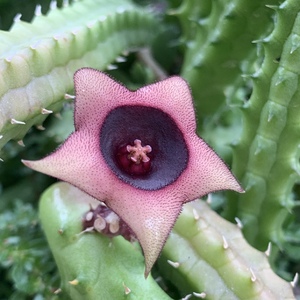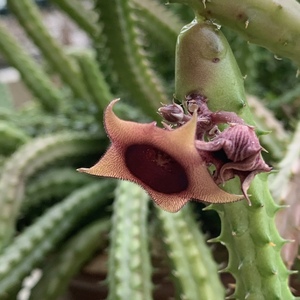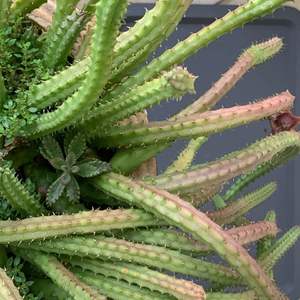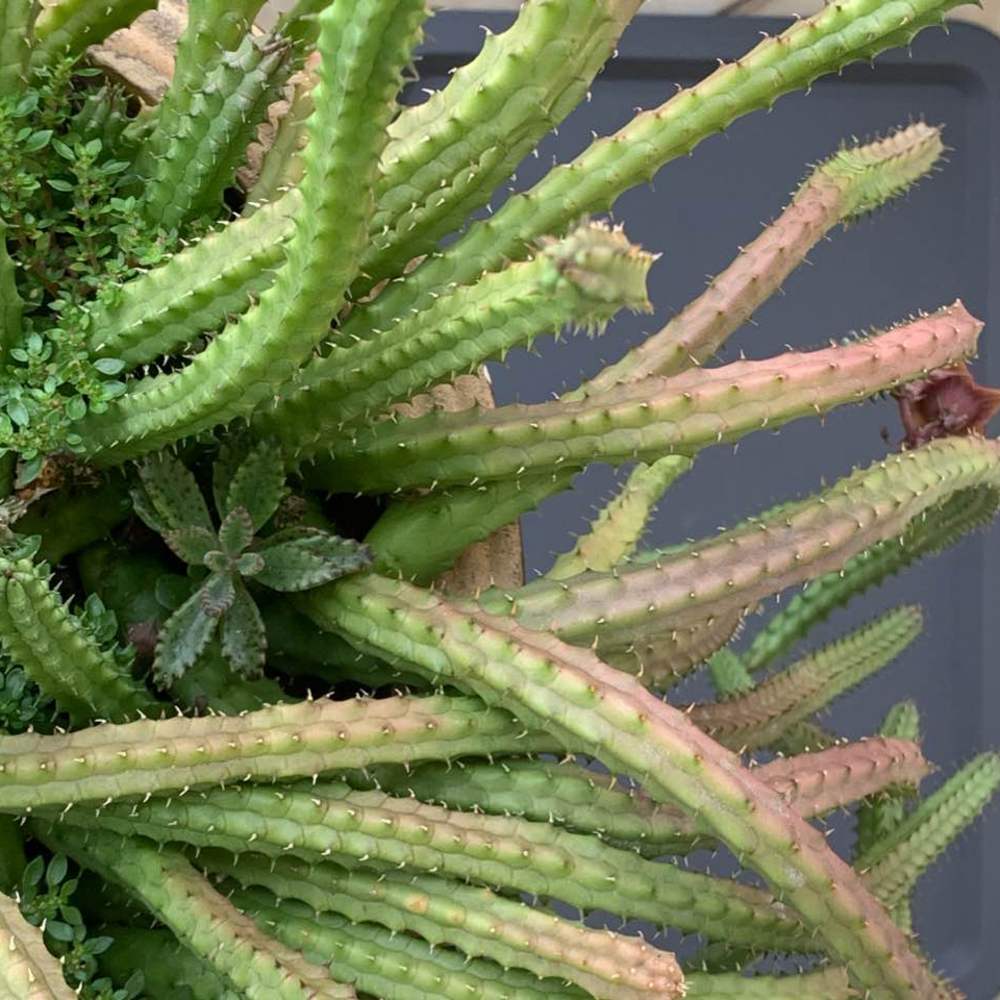植物经验
详细说明
Lifesaver plants are actually not members of the cactus family, although the tubercles — warty protuberances — that line the stem ridges can resemble the fierce spines that protect cacti. Lifesaver plants belong to the genus Huernia, low-growing succulents that are native to deserts from Southern and East Africa to Arabia. The common name comes from the conspicuous raised brightly colored ring that surrounds the middle of the star-shaped flower and resembles a red Lifesaver candy. Not all Huernias have this feature.
Soil Conditions
Huernias require a potting mix with excellent drainage. A succulent plant mix of 50 percent pumice or perlite, 25 percent peat or organic mulch, and 25 percent sand helps prevent rotting and overwatering. Roots experience dieback in cool-season dormancy, so plants grow best in shallow containers that allow the soil to dry out quickly. Using clay pots further helps soil from staying too wet. An underlayment of coarse gravel below the soil mix also improves drainage. In climates with damp cool summers, a layer of gravel between the plant and the soil mix also helps prevent the stems from staying too moist. Outdoor plantings do well in raised beds.
Light and Temperature
Lifesaver plants prefer bright light or partial shade. In nature, they grow underneath shrubs or other plants. Too much sun causes stems to develop protective reddish or purple pigmentation and can actually scald the stems. Too little light leads to weak, thin growth with decreased flower production. Huernias grow best between 50 and 80 degrees Fahrenheit (10 and 27 degrees Celsius). Protect them from freezing weather. They can tolerate down to 40 degrees Fahrenheit (4.5 degrees Celsius) when dormant if they are kept dry and temperatures over 100 degrees Fahrenheit (38 degrees Celsius) if not in full sun.
Watering
Plants should be kept dry during the winter dormant season. When Huernias are actively growing, they need to be watered. Allow the soil to dry out one inch down the container between waterings. In regions with highly mineralized water, use rainwater or water from reverse osmosis units to prevent buildup of minerals in the soil.
Fertilizing
During the growing season, high-phosphorous, low nitrogen fertilizers can be applied at half-strength once a month. Alternatively, blood meal and bone meal can be mixed into potting soil in small amounts at the beginning of the growing season. No fertilizers should be given during the dormant season.
Pests
Mealybugs are the most serious threat to plant health. These insects suck the sap from the plant stems and roots and can seriously weaken or kill the lifesaver plants. Control the mealybugs with systemic insecticides. Examine plants weekly for signs of infestation and treat promptly. Keep plants from becoming too crowded so stems can be easily seen.
Soil Conditions
Huernias require a potting mix with excellent drainage. A succulent plant mix of 50 percent pumice or perlite, 25 percent peat or organic mulch, and 25 percent sand helps prevent rotting and overwatering. Roots experience dieback in cool-season dormancy, so plants grow best in shallow containers that allow the soil to dry out quickly. Using clay pots further helps soil from staying too wet. An underlayment of coarse gravel below the soil mix also improves drainage. In climates with damp cool summers, a layer of gravel between the plant and the soil mix also helps prevent the stems from staying too moist. Outdoor plantings do well in raised beds.
Light and Temperature
Lifesaver plants prefer bright light or partial shade. In nature, they grow underneath shrubs or other plants. Too much sun causes stems to develop protective reddish or purple pigmentation and can actually scald the stems. Too little light leads to weak, thin growth with decreased flower production. Huernias grow best between 50 and 80 degrees Fahrenheit (10 and 27 degrees Celsius). Protect them from freezing weather. They can tolerate down to 40 degrees Fahrenheit (4.5 degrees Celsius) when dormant if they are kept dry and temperatures over 100 degrees Fahrenheit (38 degrees Celsius) if not in full sun.
Watering
Plants should be kept dry during the winter dormant season. When Huernias are actively growing, they need to be watered. Allow the soil to dry out one inch down the container between waterings. In regions with highly mineralized water, use rainwater or water from reverse osmosis units to prevent buildup of minerals in the soil.
Fertilizing
During the growing season, high-phosphorous, low nitrogen fertilizers can be applied at half-strength once a month. Alternatively, blood meal and bone meal can be mixed into potting soil in small amounts at the beginning of the growing season. No fertilizers should be given during the dormant season.
Pests
Mealybugs are the most serious threat to plant health. These insects suck the sap from the plant stems and roots and can seriously weaken or kill the lifesaver plants. Control the mealybugs with systemic insecticides. Examine plants weekly for signs of infestation and treat promptly. Keep plants from becoming too crowded so stems can be easily seen.
花相册 (4)




kensong
2019年01月11日

These were bought as a single small pot more than 15 years ago. It has matured, flowered and grown a lot after repotting. Not exactly sure of it's genus.













